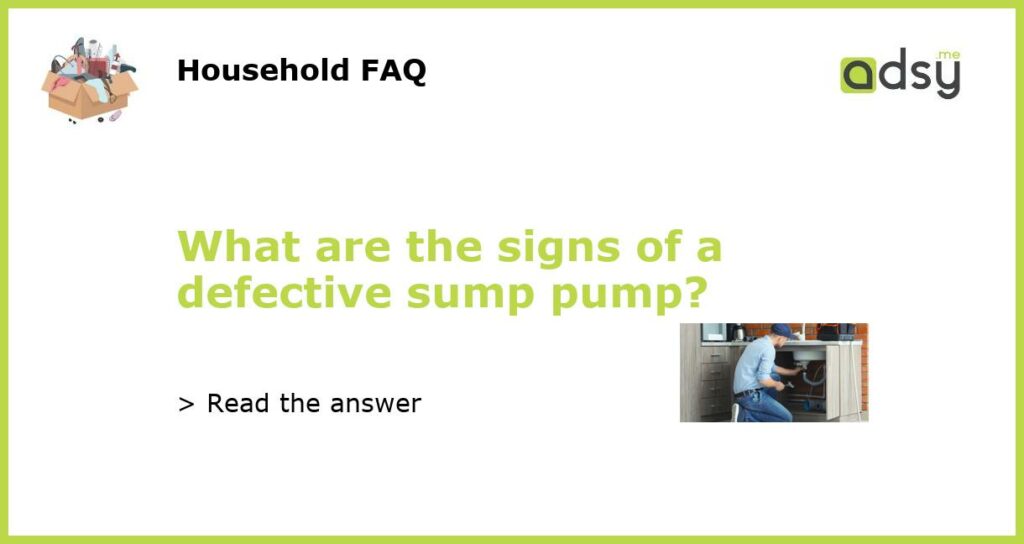Signs of a Defective Sump Pump
A sump pump is an essential piece of equipment in any home with a basement or crawl space. Its primary function is to remove excess water from these areas and prevent flooding. However, like any mechanical device, sump pumps can become defective over time. It is important to recognize the signs of a defective sump pump to avoid potential property damage and costly repairs. Here are five common signs that your sump pump may not be functioning properly:
Strange Noises
If your sump pump is making unusual sounds, such as grinding, squeaking, or clanking, it could indicate a mechanical problem. These noises may be caused by a worn-out motor, damaged impeller, or misaligned components. Ignoring these noises can lead to pump failure and water damage. It is important to address strange noises promptly by contacting a professional to inspect and repair your sump pump.
Constant Running
A properly functioning sump pump should only run intermittently when water levels reach a certain threshold. If your sump pump runs constantly, it may be due to a faulty float switch or a stuck switch mechanism. Constant running can cause the pump to overheat and burn out, rendering it ineffective when it is needed the most. If you notice your sump pump running continuously, it is crucial to have it inspected and repaired by a qualified technician.
Frequent Clogging
A sump pump that frequently clogs or becomes jammed is a clear sign of a defect. Debris, such as dirt, gravel, and sediment, can accumulate in the pump pit and clog the impeller or intake valves. Clogs prevent proper water flow, reducing the pump’s efficiency and increasing the risk of flooding. Regular maintenance, including clearing any debris from the sump pump pit, can help prevent clogging. If clogs persist, it may be necessary to replace the sump pump with a more reliable model.
Inadequate Water Removal
A sump pump’s primary job is to remove excess water from your basement or crawl space. If you notice water still pooling in these areas despite your sump pump’s operation, it may indicate a defect. Inadequate water removal can be caused by a weakened pump motor, a malfunctioning float switch, or a clogged discharge pipe. It is crucial to address this issue promptly, as it can lead to extensive water damage and mold growth.
Age and Lack of Maintenance
Sump pumps have a typical lifespan of about 10 years. If your sump pump is older than this and has not been properly maintained, it is more likely to develop defects and fail when you need it most. Lack of maintenance, such as infrequent testing, failing to replace worn or damaged parts, and neglecting annual inspections, can contribute to sump pump defects. To ensure your sump pump functions properly, schedule regular maintenance and consider replacing it if it is nearing or exceeding its expected lifespan.

